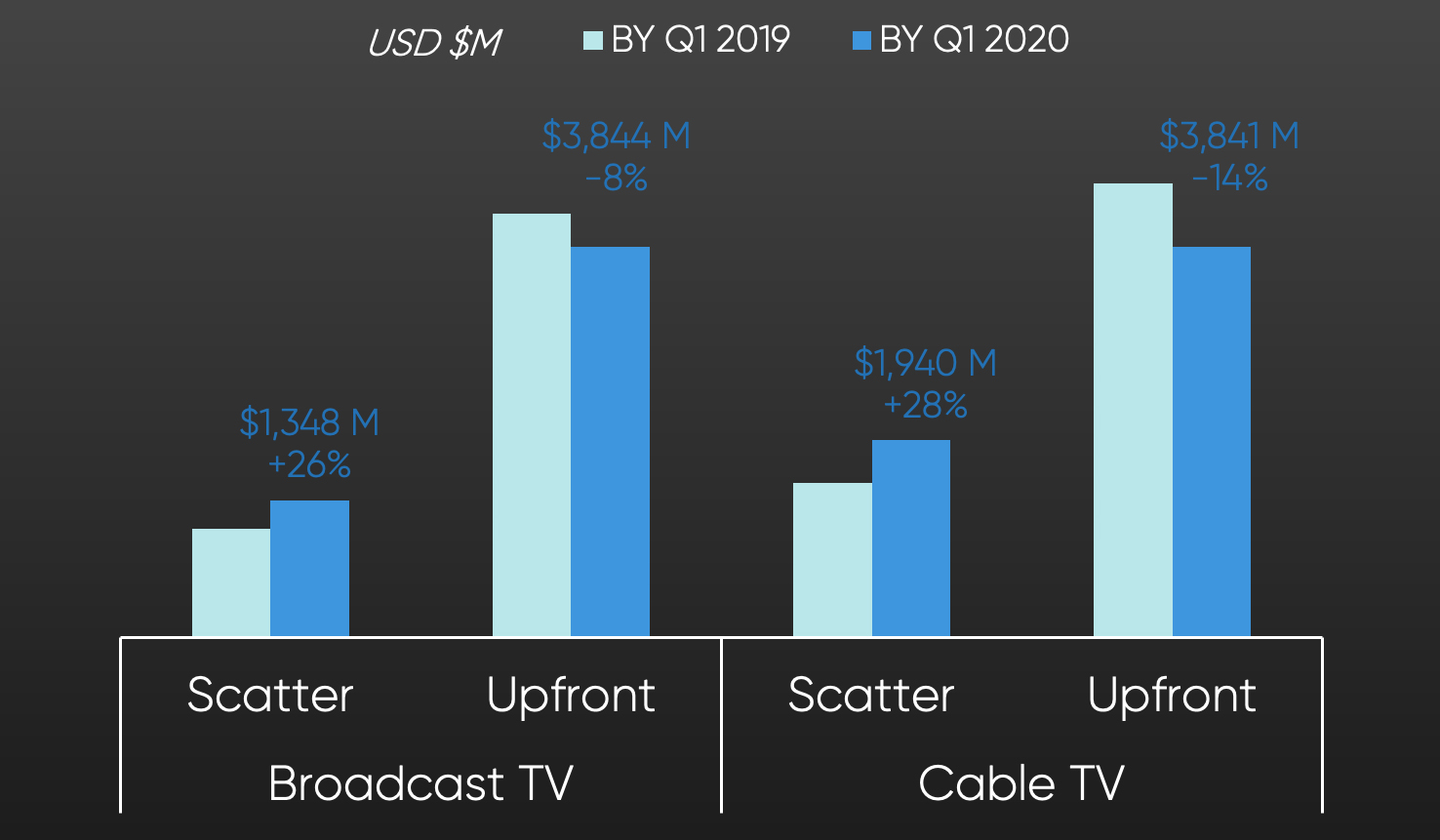Broadcast TV
In the quarter, broadcast TV generated $5.19 billion in ad dollars in the US, a slight (-1%) decline from 2019. In total, for the quarter, the upfront for broadcast TV was $3.84 billion, a year-over-year decline of -8%. In contrast, the scatter market grew by +26% totalling $1.35 billion. For the quarter, scatter accounted for 25% of ad dollars, up from 20% one year prior.
Genre: Looking at genres, with the roll-out of entertainment shows delayed well into the quarter, ad dollars for upfront (-16%) and scatter (-11%) were both down compared to one year ago. When it became known live sports would return, the scatter ad dollars took off with ad spend up by a whopping +55%, compared to a relatively flat-3% for the sports upfront. Over one-half (56%) of all national ad dollars were allocated to sports. News with more stability had year-over-year upfront dollars at +2% and scatter at -1%.
Cable TV
For the quarter, cable generated $5.78 billion in ad spend, a year-over-year decline of -3%. In the quarter ad spend for the upfront ad dollars totalled $3.84 billion similar to broadcast TV and a drop-off of 14%. The cable scatter market grew by +28% reaching $1.94 billion. In 2020, the scatter market for cable garnered nearly 34% of ad dollars, compared to 25% the previous year. With a stronger scatter market, more ad dollars were allocated to cable than broadcast for the quarter.
Genre: Nearly three-quarters of ad dollars were spent on entertainment programs. Following a similar pattern, the upfront ad marketplace for entertainment programs fell by -14% but rebounded to +29% in scatter. In sports, upfront ad dollars were -22%, but unlike broadcast, scatter sports year-over-year was at -2%. Not surprisingly, cable news proved to be strong in upfront (+27%) and especially scatter (+71%).
Conclusion: Although there was some concern about the return of entertainment programs and sports, once both resumed, advertisers also returned, resulting in a stronger than usual scatter market. Despite the pandemic and sluggish ad market earlier in the year, the upfront and scatter marketplace produced $11 billion in ad dollars for the quarter, a slight year-over-year decline. This continues to enforce the notion of television advertising as a primary source for reach and brand awareness in a safe program environment. SMI will continue to follow the TV ad marketplace throughout the 2020-21 season.





